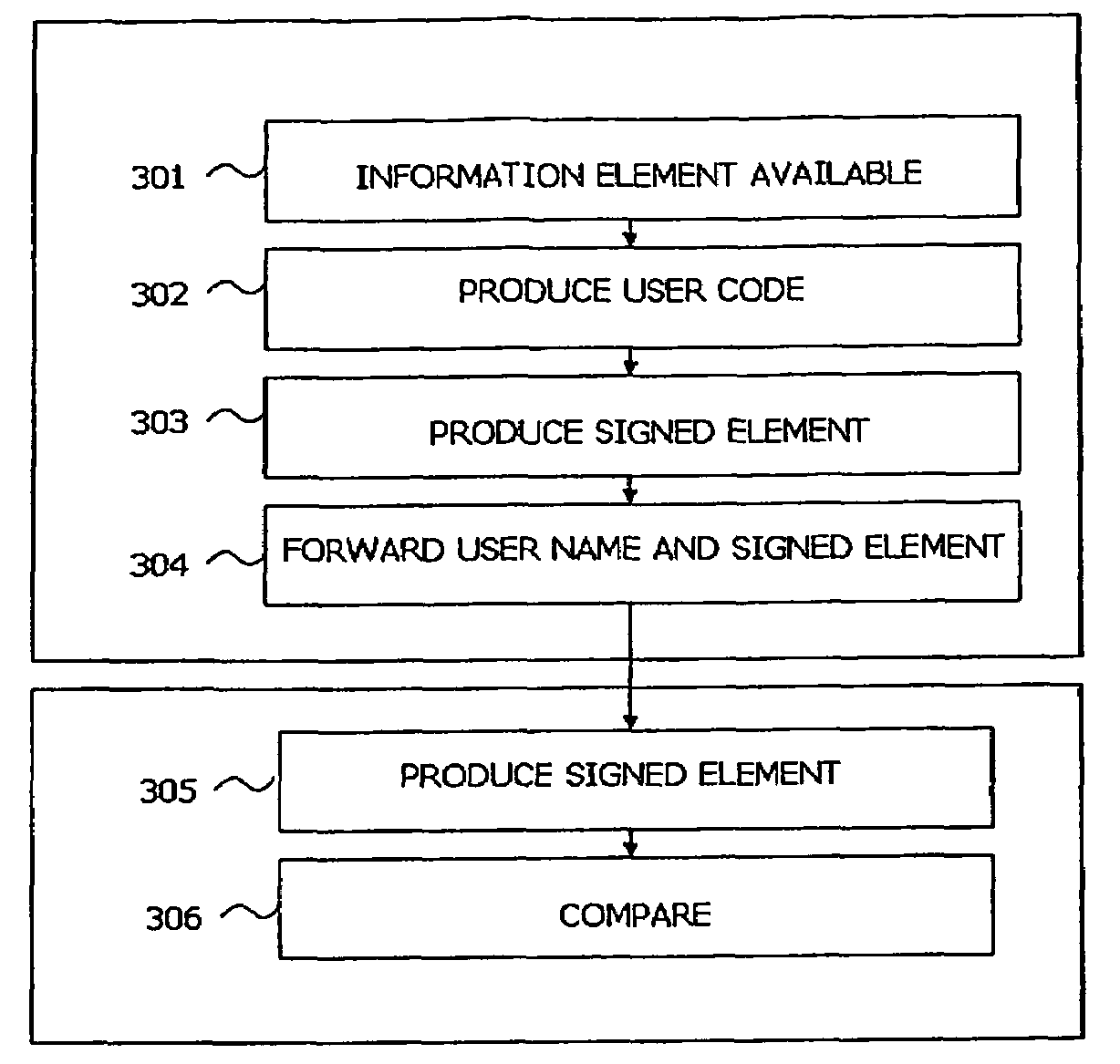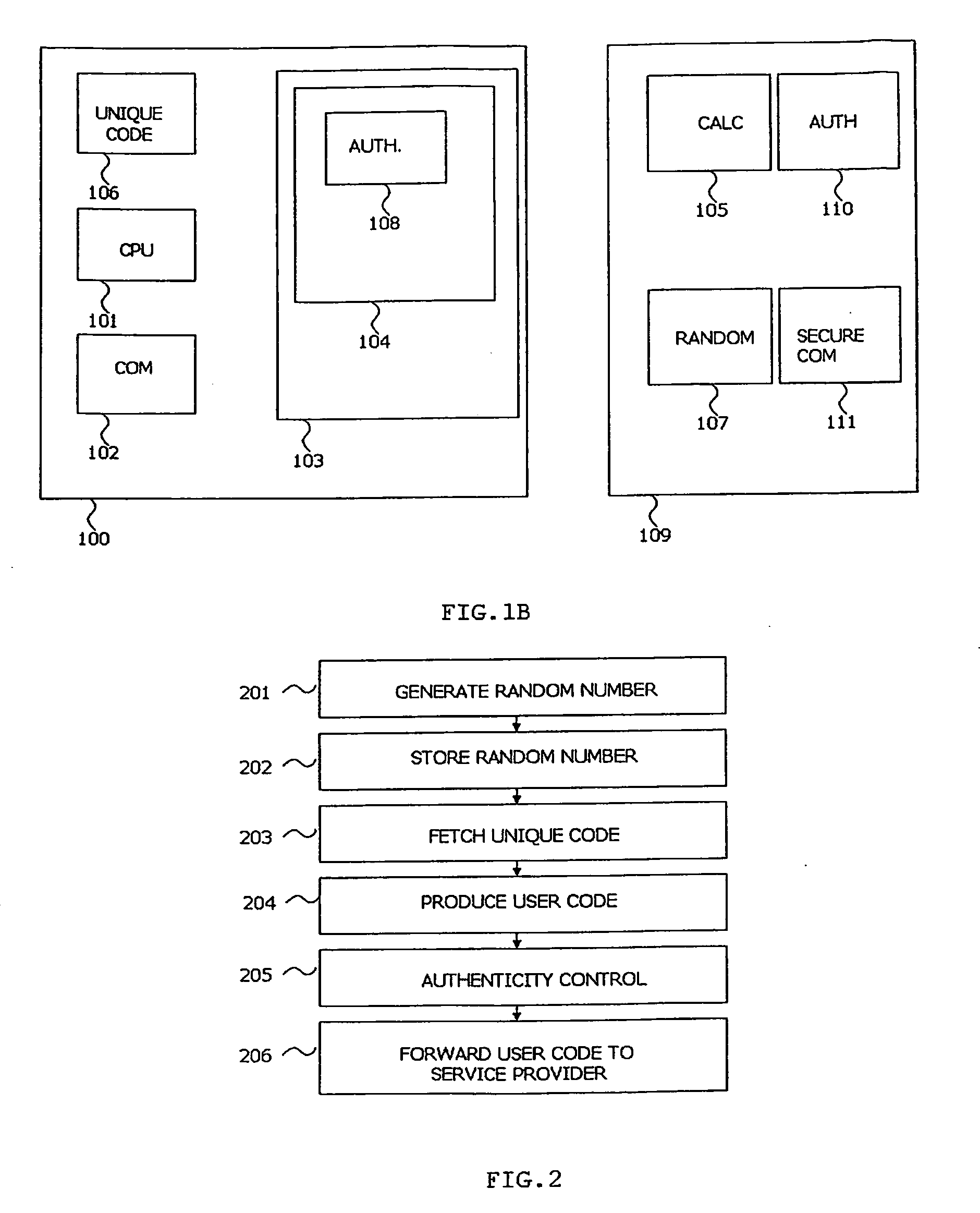Method and Arrangement for Secure Authentication
a technology of secure authentication and authentication method, applied in the field of user authentication, can solve the problems of not being regarded as a safe environment for mobile terminals, affecting the service of electronic channels, and requiring service providers to provide physical possession factors
- Summary
- Abstract
- Description
- Claims
- Application Information
AI Technical Summary
Benefits of technology
Problems solved by technology
Method used
Image
Examples
first embodiment
of the Present Invention
[0055]In a first embodiment of the invention, one or more user codes generated by the arrangement are registered (second session) as one or more authentication factors for a user at a service provider. The service provider will perform the registration according to its established security policies. The registration procedure might include distribution of shared secrets, and the registration procedure might consists of online or offline procedures or combinations thereof.
[0056]The registration procedure includes exchange of data from the user to the service provider. Data produced in the registration session, user codes, will later be utilised for user authentication. The user codes might represent a user's possession factor only or represent both a user's possession factor and knowledge factor. One registration session (second session) might include the issuing of a user code based on the possession factor only and / or a user code based on both the possession...
second embodiment
of the Present Invention
[0085]In a second embodiment of the invention where no communication means of a personal terminal is used in communication between a user and a service provider (second party), the user can read a user code from the personal terminal display and enter the user code on a second terminal, where the user communicates with the service provider. In this embodiment the service provider will not require authenticity control of one or more clients, or indeed might not be aware of the usage of the one or more clients. Off line usage is applicable where service providers have less stringent requirements on security and the user want to ensure that the user password, or user secret, at each service provider is different.
third embodiment
of the Present Invention
[0086]In a third embodiment according to the present invention a one or more clients can be partly installed in a proxy server, and partly on a personal terminal. A proxy server being a service that allows the at least one client to make indirect network connection to the service provider. Referring to FIG. 1B, in this embodiment a limited set of functions are executed on the personal terminal 100 and the rest is executed on the proxy server 109. The personal terminal part of the arrangement will include authenticity control 108, while the random number generation capacity 107 and one or more calculation algorithms 105 are stored on the proxy server. The proxy server can operate in a secure and trusted environment. The benefits of this embodiment are twofold:
[0087]The data input needed to produce the user code is distributed in two locations, making it very difficult for an intruder to obtain both;
[0088]Reducing the size and complexity of the at least one cli...
PUM
 Login to View More
Login to View More Abstract
Description
Claims
Application Information
 Login to View More
Login to View More - R&D
- Intellectual Property
- Life Sciences
- Materials
- Tech Scout
- Unparalleled Data Quality
- Higher Quality Content
- 60% Fewer Hallucinations
Browse by: Latest US Patents, China's latest patents, Technical Efficacy Thesaurus, Application Domain, Technology Topic, Popular Technical Reports.
© 2025 PatSnap. All rights reserved.Legal|Privacy policy|Modern Slavery Act Transparency Statement|Sitemap|About US| Contact US: help@patsnap.com



